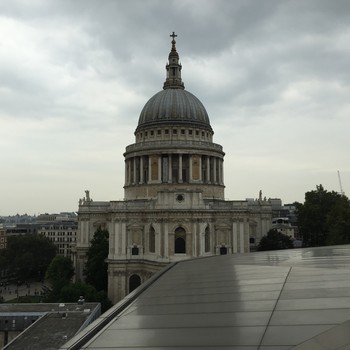Why does the Antarctic have a large hole in the ozone, when no one even lives there?
2 Answers
The earth magnetic field draws charged particles to the south pole. These charged particles react chemically with the ozone creating a hole in the ozone layer.
Explanation:
Magnetism and electricity are linked. A moving magnetic field creates an electric field. Likewise a moving electric field will create a magnetic field.
The earth is a giant magnet. The spinning of the iron core where there are moving electrons creates an magnetic field. This magnetic field moves from the North pole to the south pole of the earth.
The magnetic field moving across the earth from pole to pole draws electrically charged particles to the magnetic field. The earth's magnetic field terminates at the the south pole ( moves inside the earth and comes out again at the North pole hence the northern lights.) This means that there is a higher concentration of electrically charged particles at the South pole.
It doesn't matter where the electrically charged particles are produced ( usually where there are high concentrations of people) Large numbers of the charged particles will end up at the South Pole. There the electrically Charged particles will interact chemically with Ozone ( O_3) and unstable isomer of Oxygen.
The chemical reactions will result in
These chemical reactions which take place near the south pole destroy the Ozone layer and the ozones layers protection from harmful solar radiation.
The process happens elsewhere but to a far lesser extent. The Antarctic has the best conditions in the stratosphere for the reactions to take place.
Explanation:
It is this region (the south pole) that the best conditions exist for the reactions that result in ozone depletion. It pretty much comes down to clouds.
CFCs in the stratosphere can be cleaved by UV radiation but for this to happen, you need clouds in the stratosphere to provide ice crystal surfaces on which the chemical reactions can take place
There is usually a lack of clouds in stratosphere due to lack of water vapour. But during the winter period at the south pole the temperature goes so low (lower than -80°C) that very thin clouds can form.
Once spring arrives and the UV radiation from the sun is able to reach the region, UV initiated molecular cleavage occurs resulting in chlorine release and subsequent ozone depletion. This can continue until the summer period where temperatures increase sufficiently to disperse the clouds. At this time, air from lower latitudes can start to get into the polar regions, thereby replenishing (some of the) lost ozone layer.
So the ozone hole is somewhat seasonal, larger in ate September and early October.
You do get a similar effect at the other pole (Arctic) but it isn't as noticeable, as the Arctic stratosphere gets less cold than the Antarctic so stratospheric clouds are less likely to be formed.

